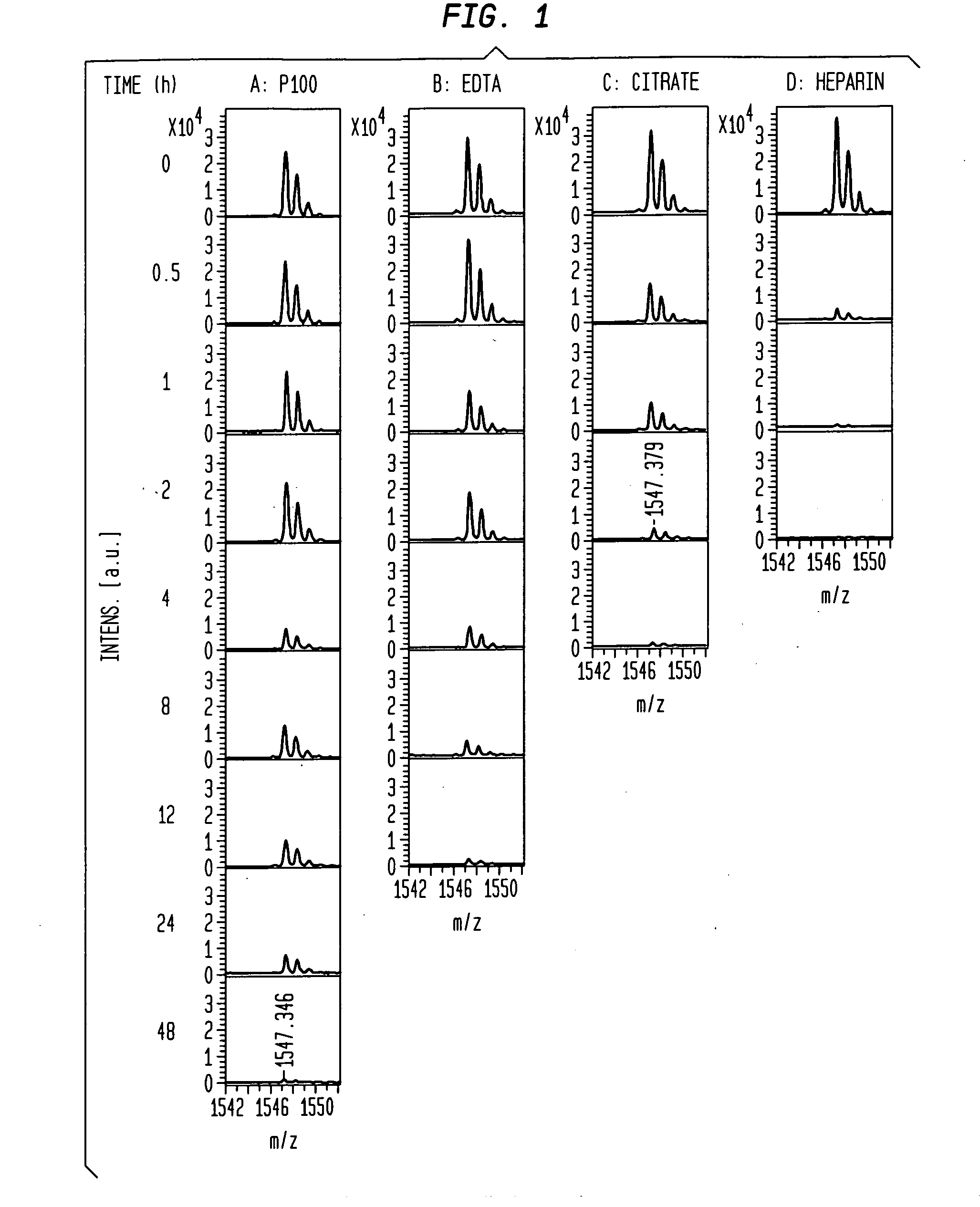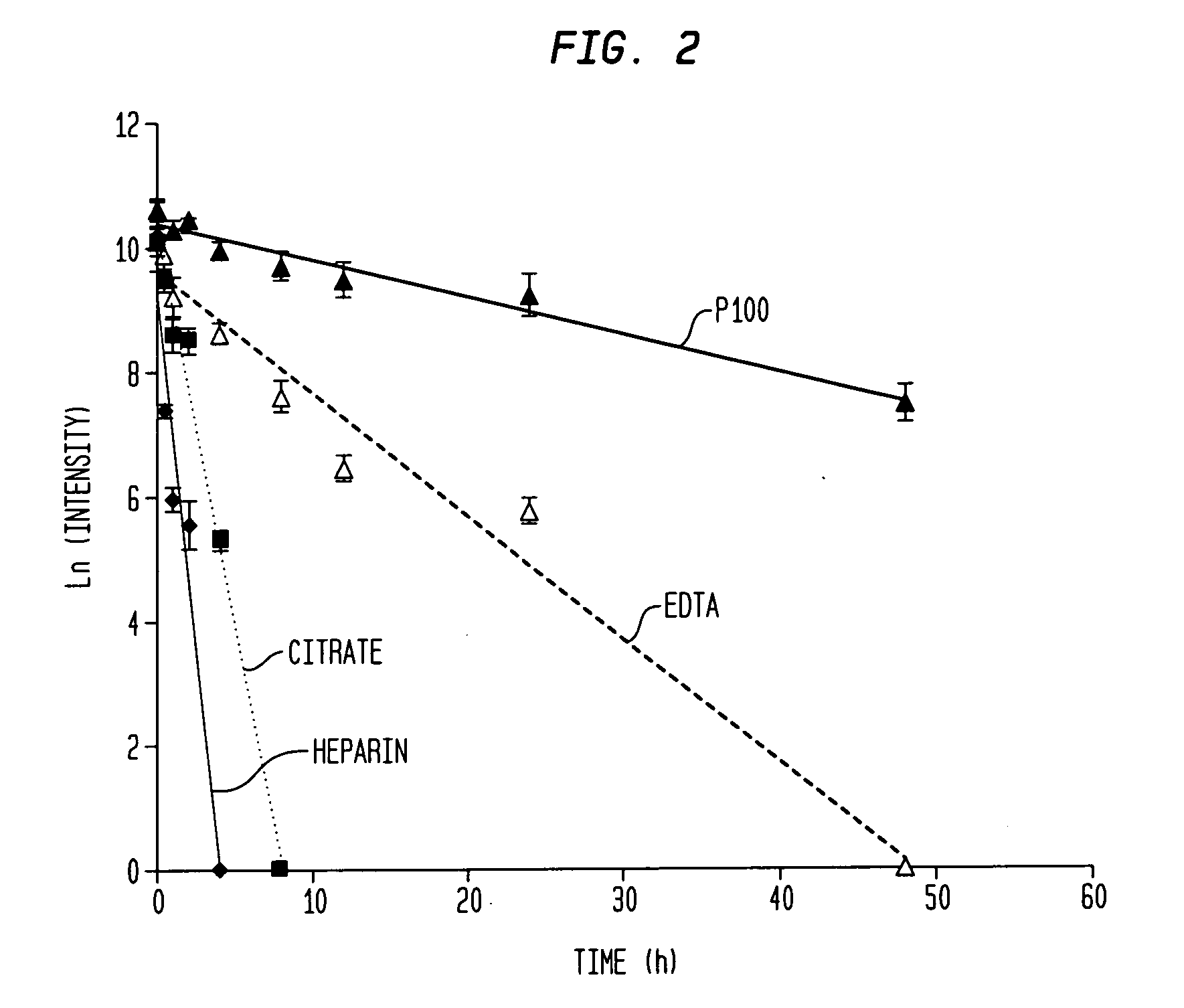System and method for diagnosing diseases
a disease and system technology, applied in the field of system and method for diagnosing diseases, can solve problems such as susceptibility to degradation
- Summary
- Abstract
- Description
- Claims
- Application Information
AI Technical Summary
Benefits of technology
Problems solved by technology
Method used
Image
Examples
working example
[0067]A direct test for stability of a peptide biomarker in a collected blood sample was carried out by monitoring its change during a time-course incubation. It was discovered that the spiked peptides themselves are subject to preanalytical degradation, and thus the spiked peptides became our focus for studying the relative instability of peptides in various blood samples. The stability of AQUA FPA was tested by adding it into either a serum or plasma sample (either BD P100, EDTA, citrate, or heparin plasma) collected from a single venipuncture, or a pooled serum or plasma sample from three healthy individuals. After the spiked sample was incubated for specified periods of time, the peptides were measured by MALDI-TOF MS.
[0068]Human blood from healthy individuals was directly drawn into evacuated tubes to obtain serum and plasma samples, as described previously (20). Briefly, serum tubes (BD product #366430) were placed at room temperature (r.t., approx. 24° C.) to clot for 60 min ...
PUM
 Login to View More
Login to View More Abstract
Description
Claims
Application Information
 Login to View More
Login to View More - R&D
- Intellectual Property
- Life Sciences
- Materials
- Tech Scout
- Unparalleled Data Quality
- Higher Quality Content
- 60% Fewer Hallucinations
Browse by: Latest US Patents, China's latest patents, Technical Efficacy Thesaurus, Application Domain, Technology Topic, Popular Technical Reports.
© 2025 PatSnap. All rights reserved.Legal|Privacy policy|Modern Slavery Act Transparency Statement|Sitemap|About US| Contact US: help@patsnap.com



